1999: The Nikon D1 revolution
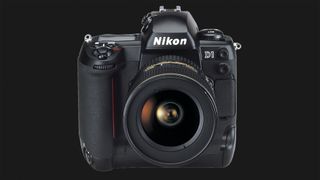
Based on the concepts of ‘superb image quality’, ‘ultra-high speed’ and ‘ease of use,’ the project to develop the Nikon D1 DSLR camera was begun directly under the president. The challenge he set was to bring the project to fruition within two years.
Team leaders asked for three years, on the grounds that two years was insufficient, as the company did not possess much accumulated digital technology at that time. The response was “Nikon does not have that much time right now” and the company endeavoured to make it happen in just two short years.
The D1 was a ground-breaking device that offered the comprehensive strengths of excellent image quality, operability and functionality while being only about a third of the price of competitors’ products, at JPY 650,000, thereby spurring on the popularisation of digital SLR cameras.
The D1 featured a 2.7MP image sensor, 4.5-frames-per-second continuous shooting, and was of course compatible with the full range of Nikon F-mount lenses. The design was based on the F5 and had the same general layout of controls, which helped to ensure that existing users of Nikon film SLR cameras were able to transition from film to digital relatively seamlessly.
Since then, Nikon has continued to produce advanced flagship models exceeding professional expectations, right up to the new D5 DSLR, but it’s the D1 that is rightly seen as a major milestone in the digital photography era.
2000: First for Vibration Reduction
Nikon was the first manufacturer to include optical Vibration Reduction (VR) in a camera (1994’s Nikon Zoom 700VR / Zoom-Touch 105 VR QD), but its first interchangeable lens with built-in VR followed six years later. The AF VR Nikkor 80-400mm f/4.5-5.6D ED enabled pictures to be taken handheld at a shutter speed that was three stops slower than you ordinarily could without using a VR lens, and still get sharp results – assuming the subject wasn’t moving of course.
2007: Nikon D3
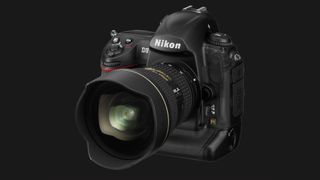
Nikon’s first full-frame camera was announced in the summer of 2007, going on sale early the following year. Nikon described the new 36 x 24mm sensor as ‘FX format’ and didn’t stack the extra space with more pixels – the D3 actually had slightly fewer pixels (12.1MP) than the D2X (12.2MP).
Get the best Black Friday deals direct to your inbox, plus news, reviews, and more.
Sign up to be the first to know about unmissable Black Friday deals on top tech, plus get all your favorite TechRadar content.
The D3’s specification improved on those of previous pro models in every sense. For example, it featured a record-beating continuous drive of 9fps, a 51-point autofocus system and a 3in LCD monitor with a 922,000-dot screen.
Pros were also impressed by the auto ISO mode, which set the ISO rating to meet your desired shutter speed. This is a common feature now, but was pioneered with the D3. The camera was also praised for its lack of noise at higher ISO ratings. Here was a body that proved you could shoot at ISO1,000, 2,000 or higher with confidence.
2008: Nikon D90
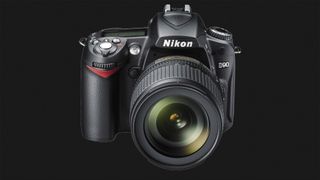
Filmmakers have been quick to take advantage of the cinematic look that affordable and easy-to-position DSLRs can bring to their productions. But it was the Nikon D90 that really started the video-recording revolution.
The first DSLR with a dedicated movie mode, the D90 offered HD video and sound recording. With a maximum resolution of 1,280x720 pixels at 24fps, it trounced all but a few digital compacts, made MiniDV camcorders look a bit sick and, with its comparatively large APS-C sensor and access to the vast NIKKOR lens range, it was capable of providing perspectives not possible with typical HD camcorders.
2012: Nikon D800/D800E
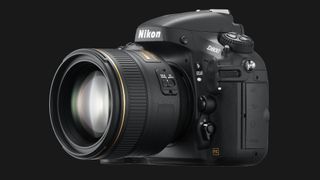
It’s hard to believe that the D800 is only five years old. With its FX-format sensor packing 36.3 effective megapixels, the excitement surrounding its announcement was unprecedented. Although it has a more densely populated sensor, the D800 utilised many of the new features of the previously announced 16.2MP D4 in a smaller body and at a cheaper price. These include the EXPEED 3 processor, the 51-point Multi-Cam 3500 FX autofocus system and the same 91K-pixel metering system. It was also capable of focusing right down to -2 EV, which, coupled with its ability to shoot at up to ISO25,600, made it the low-light shooting king.
The D800 was available in two versions: a ‘standard’ body, plus a special edition, the D800E. The latter had a modified filter over the sensor with no anti-aliasing qualities, allowing for a potentially greater amount of detail to be resolved.
2017: D5 and D500 100th Anniversary Editions
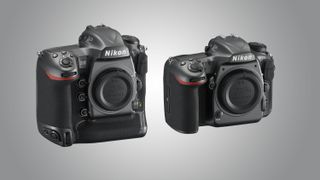
So here we are. One hundred years on from the day Nippon Kogaku was formed to further Japan’s interests in the world of optical instruments. And it’s fair to say that Nikon has been instrumental in furthering our knowledge of the world through its optical excellence.
Nikon has prepared a range of special-edition cameras, lenses and accessories to mark its 100-year milestone. Heading the line-up are 100th Anniversary Editions of the current flagship FX and DX DSLRs – the D5 and D500 – each of which features an attractive metallic grey body with a 100th Anniversary logo on one side of the pentaprism.
Both the D5 and D500 are supplied with specially designed body caps and embossed leather straps, each of which features the 100th Anniversary logo, and come cocooned in a bespoke metal case with a plate engraved with the 100th Anniversary logo, along with the camera’s serial number.
To distinguish the special-edition D5 further, not only is it supplied with an anniversary booklet that celebrates Nikon’s contribution to space exploration, but the bottom of the camera is engraved with the message: ‘Nikon – contributing to manned space flight since 1971’.
This feature was originally published in N-Photo Magazine, to subscribe, click here
Most Popular


